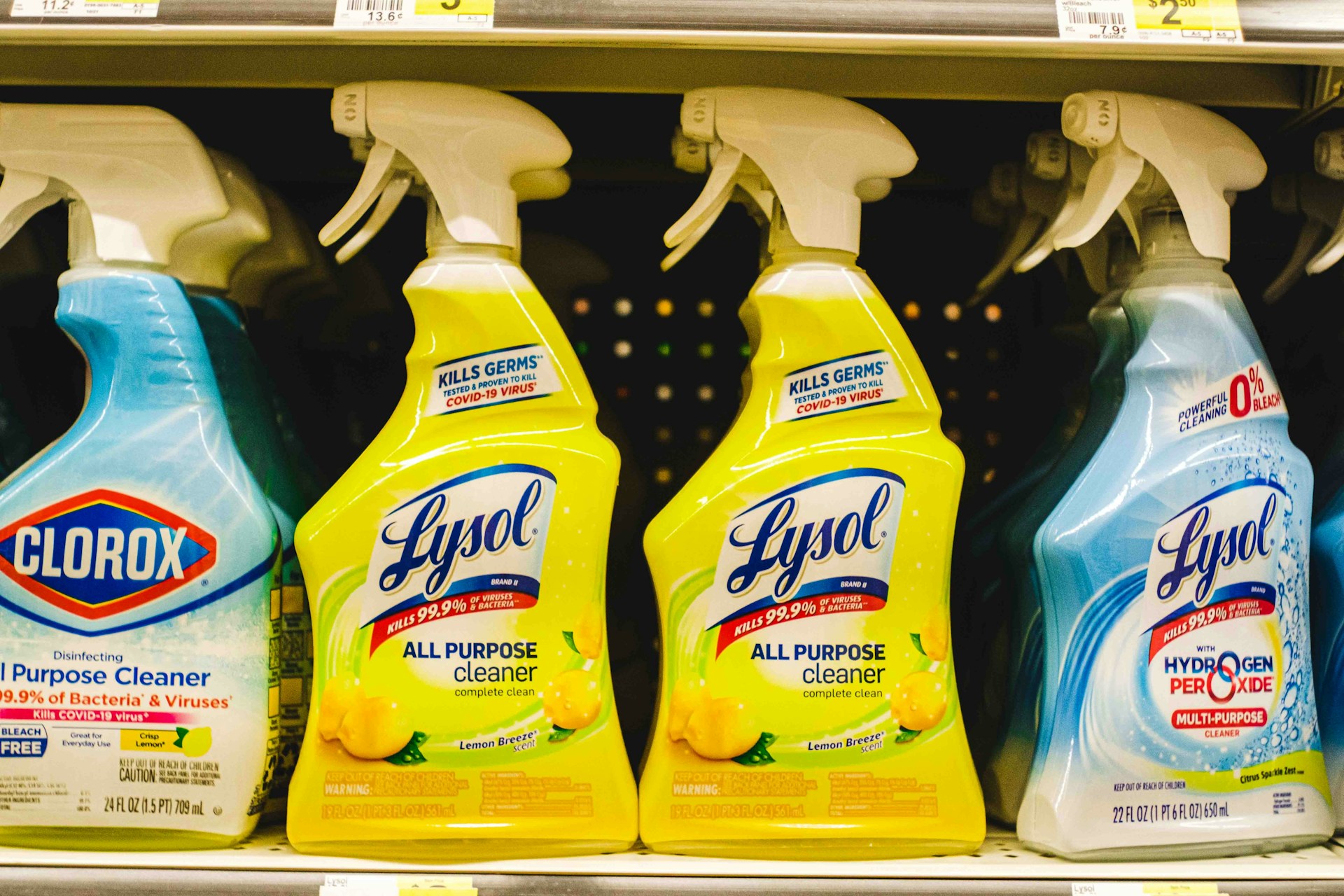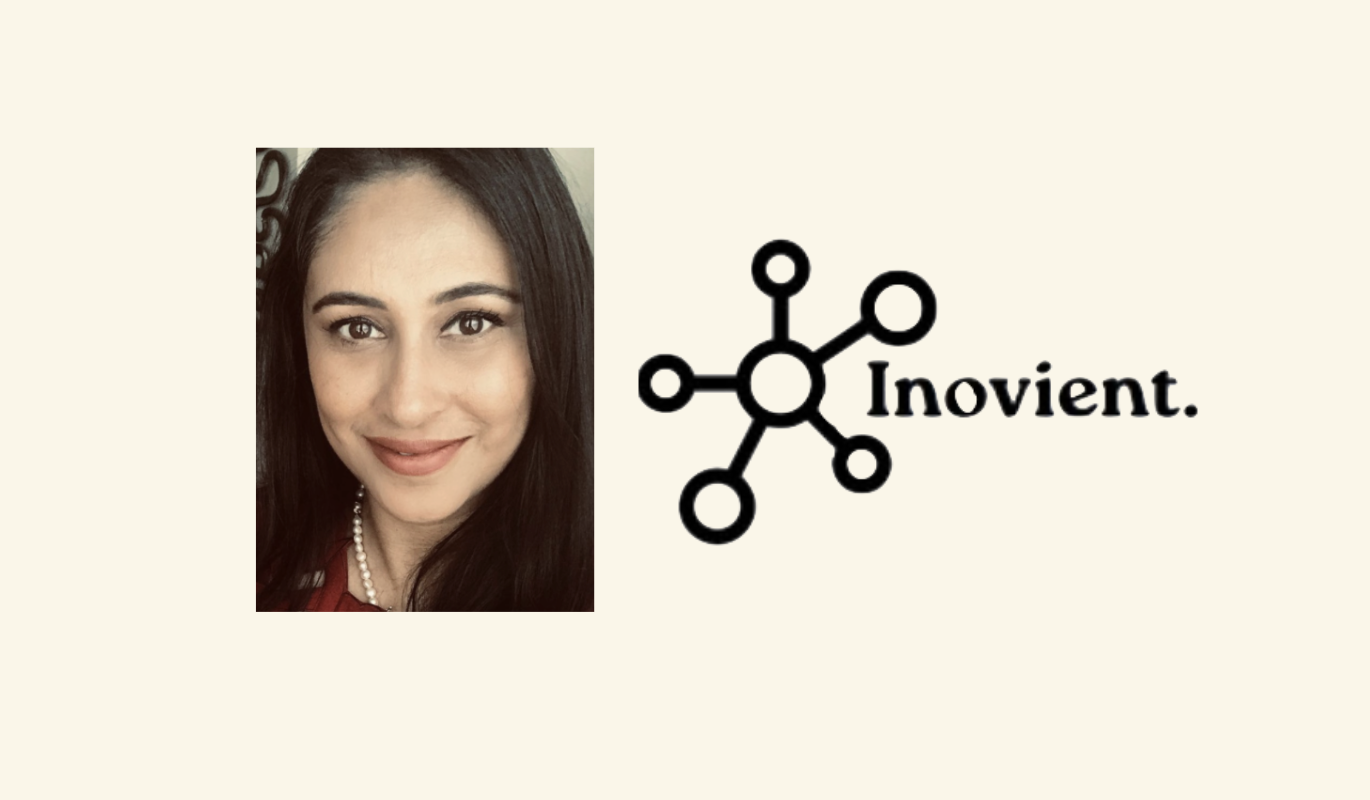AI Brand-Safety Checklist for Household Cleaning Products Ecommerce

Every misleading product claim, incorrect usage instruction, or inadequate safety warning in household cleaning products ecommerce can trigger regulatory violations, consumer harm, and catastrophic brand damage. With over 60% of sales on Amazon coming from independent third-party sellers and investigations and recalls periodically finding unsafe products on e-commerce marketplaces, cleaning product retailers face unprecedented safety challenges. Envive's AI agents provide the comprehensive brand-safety protocols needed to protect both regulatory compliance and customer confidence while scaling personalized shopping experiences.
Key Takeaways
- EPA and CPSC regulations govern most household cleaning products. EPA regulates antimicrobial disinfectants; CPSC enforces hazard labeling under FHSA. California's Cleaning Product Right to Know Act (SB 258) requires online ingredient disclosure for designated products
- AI content moderation can automatically flag a large share of unsafe content, but requires human oversight for regulatory nuances
- 81% of shoppers value transparency when buying products, making accurate safety information critical for trust and conversions
- Brand-safe AI implementations can increase conversions significantly while maintaining strong compliance controls
- California's disclosure requirements mandate online ingredient listings for all designated cleaning products as of 2020
- Modern AI systems must handle complex safety scenarios including chemical interactions, proper dilution ratios, and emergency response protocols
The Regulatory Landscape for Cleaning Products Ecommerce
Your cleaning products brand operates within a complex regulatory framework that generic AI cannot safely navigate. The Consumer Product Safety Commission oversees enforcement of safety standards, while state-specific regulations like California's Cleaning Product Right to Know Act add additional compliance layers. With over 86,000 chemicals listed in EPA's TSCA Inventory, of which roughly half are designated as active, and many lacking comprehensive toxicity data, AI systems must be specifically trained to recognize and flag potential safety issues.
The financial implications of non-compliance are severe. The FTC's enforcement actions make clear that using AI tools to mislead consumers is illegal, with one scheme alone costing consumers more than $15.9 million. Beyond regulatory fines, 92% of customers would stop engaging with a brand after two or three negative interactions, making brand safety essential for long-term survival.
Essential AI Safety Protocols Checklist
1. Regulatory Compliance Engine
Your AI must understand and enforce multiple regulatory frameworks simultaneously:
State-Specific Requirements:
- Implement California Proposition 65 warning protocols
- Enforce ingredient disclosure requirements for designated products
- Adapt safety warnings based on customer location
- Maintain jurisdiction-specific compliance documentation
Claim Verification System:
- Build database of acceptable versus prohibited efficacy claims
- Distinguish between cleaning claims and disinfection claims
- Verify all "kills 99.9% of germs" statements against EPA registrations (verify EPA Reg. No., organism list, contact time, surface, residual/disinfection distinctions, and no off-label claims)
- Flag unsubstantiated environmental or safety claims
EPA Safer Choice (Not regulatory):
- Verify products against EPA's Safer Choice certified products list and represent accurately
- Distinguish between EPA-registered disinfectants and general cleaners
- Ensure antimicrobial claims meet EPA registration requirements
- Flag products requiring specific safety certifications
2. Product Information Management
Accurate product information forms the foundation of brand safety:
Comprehensive Ingredient Database:
- Maintain complete chemical inventories with CAS numbers
- Track concentration levels and safety thresholds
- Document known allergens and sensitizers
- Include pH levels and reactivity warnings
- Cross-reference with toxicity databases
Safety Data Sheet Integration:
- Link all products to current SDS documentation
- Extract key hazard information for customer queries
- Provide emergency response information
- Maintain version control for regulatory updates
Usage and Dilution Guidelines:
- Specify exact dilution ratios for concentrated products
- Include surface compatibility information
- Provide contact time requirements for disinfectants
- Detail proper ventilation requirements
3. Content Generation Guardrails
AI-powered content for cleaning products requires multiple validation layers:
Product Description Compliance:
- Verify all efficacy claims against product registrations
- Include required safety warnings and precautions
- Maintain consistency across all product touchpoints
- Avoid medical or therapeutic claims
Label Accuracy Verification:
- Match online descriptions to physical product labels
- Include all required warning statements
- Display proper first aid instructions
- Maintain signal word hierarchy (Danger, Warning, Caution)
Marketing Copy Safety:
- Avoid comparative claims without substantiation
- Prevent greenwashing or misleading environmental claims
- Ensure child safety messaging is prominent
- Include proper disposal instructions
4. Customer Interaction Protocols
AI handling customer queries must navigate safety concerns carefully:
Safety Question Handling:
- Recognize emergency situations requiring immediate human intervention
- Provide accurate first aid information from SDS
- Direct poison control inquiries to appropriate hotlines
- Maintain clear escalation protocols
Product Recommendation Filters:
- Screen for customer-mentioned allergies or sensitivities
- Avoid recommending incompatible chemical combinations
- Consider pet and child safety in household recommendations
- Flag professional-grade products requiring special handling
Usage Guidance Parameters:
- Provide surface-specific application instructions
- Emphasize proper protective equipment requirements
- Include ventilation and exposure time limits
- Warn against dangerous mixing scenarios
Implementation Roadmap for Cleaning Products Brands
Phase 1: Compliance Audit (Weeks 1-2)
Start with comprehensive documentation of your current compliance status:
- Catalog all products with EPA registration numbers
- Review existing safety warnings and label compliance
- Document state-specific requirements for all selling locations
- Identify high-risk categories (disinfectants, drain cleaners, oven cleaners)
- Map current content approval workflows
Phase 2: Data Infrastructure (Weeks 3-4)
Build the foundation for AI-powered safety:
- Digitize all Safety Data Sheets and product labels
- Create ingredient master database with safety profiles
- Establish regulatory update monitoring systems
- Configure real-time content moderation APIs
- Implement audit trail documentation
Phase 3: AI Configuration (Weeks 5-6)
Configure brand-safe AI systems with cleaning-specific intelligence:
- Upload comprehensive product catalogs with full formulations
- Create decision trees for safety inquiries
- Build claim verification rules and filters
- Establish emergency response protocols
- Configure jurisdiction-aware compliance rules
Phase 4: Testing and Validation (Weeks 7-8)
Rigorous testing prevents safety incidents:
- Simulate chemical mixing inquiries
- Test emergency response scenarios
- Verify regulatory compliance across product lines
- Validate safety warning prominence
- Stress-test with edge cases
Phase 5: Deployment and Monitoring (Weeks 9-10)
Roll out with appropriate safeguards:
- Start with low-hazard categories (all-purpose cleaners)
- Monitor all interactions for first 30 days
- Gradually expand to higher-risk products
- Maintain human oversight for safety-critical queries
- Implement continuous compliance monitoring
Critical Safety Checkpoints
Chemical Compatibility Matrix
Your AI must recognize dangerous combinations:
Never Mix Scenarios:
- Bleach + Ammonia = Toxic chloramine vapors
- Bleach + Acids (e.g., vinegar) = Chlorine gas
- Different drain cleaners = Violent reactions
Safe Combination Guidelines:
- Sequential use protocols with rinsing between products
- Compatible surface cleaner combinations
- Proper layering for multi-step cleaning processes
- Time delays between incompatible products
Emergency Response Protocols
AI systems must recognize and properly handle emergencies:
Immediate Escalation Triggers:
- Eye contact with corrosive cleaners
- Ingestion of any cleaning product
- Respiratory distress mentions
- Chemical burn descriptions
- Pet or child exposure incidents
Response Requirements:
- Direct to poison control (1-800-222-1222)
- Provide product-specific first aid from SDS
- Loop in human support immediately
- Document incident for reporting
- Follow up on resolution
Measuring Brand Safety Success
Track these metrics to ensure your AI maintains compliance while driving results:
Compliance Metrics:
- Zero tolerance for regulatory violations
- Label accuracy rate (target: 100%)
- Safety warning display rate
- Emergency response time
- Audit compliance score
Customer Safety Indicators:
- Reported adverse events
- Safety-related support tickets
- Proper usage confirmation rates
- Chemical mixing inquiry prevention
- Emergency escalation effectiveness
Business Performance:
- Conversion rate improvement with safety-first AI
- Customer trust scores
- Repeat purchase rates
- Average order value with safe bundling
- Liability incident reduction
Advanced Safety Strategies for Household Cleaners
Multi-Modal Hazard Detection
Implement comprehensive safety monitoring across all content types:
- Text Analysis: Scan product descriptions, reviews, and Q&As for safety concerns
- Image Recognition: Verify proper warning labels and safety symbols are visible
- Sentiment Monitoring: Track customer feedback for adverse reactions like "caused a rash"
- Pattern Detection: Identify unusual returns or complaints indicating safety issues
- Regulatory Scanning: Monitor for product recalls and safety alerts
Dynamic Risk Assessment
AI algorithms can rank unusual patterns to generate safety leads:
- Monitor sales spikes of potentially dangerous combinations
- Track seasonal safety risks (holiday cleaning, spring cleaning)
- Identify demographic-specific hazards
- Assess cumulative exposure risks
- Predict potential safety incidents
Proactive Safety Communication
Stay ahead of safety issues with preventive measures:
- Push safety reminders for high-risk products
- Provide seasonal safety tips and guides
- Alert customers to product updates or reformulations
- Share proper storage and disposal information
- Educate on child-resistant packaging use
Common Pitfalls and Solutions
Pitfall 1: Generic "Natural" or "Green" Claims
The Problem: AI may generate unsubstantiated environmental claims that violate FTC Green Guides.
The Solution: Require specific substantiation for all environmental claims. Define acceptable terms with clear criteria. Default to factual ingredient information rather than vague marketing language.
Pitfall 2: Incomplete Safety Warnings
The Problem: AI might truncate or paraphrase critical safety information, creating liability exposure.
The Solution: Lock safety warnings as non-editable content blocks. Always display complete warnings from product labels. Never allow AI to summarize or simplify mandatory safety language.
Pitfall 3: Cross-Border Compliance Gaps
The Problem: Different countries have varying chemical restrictions and labeling requirements.
The Solution: Implement geo-blocking for restricted products. Maintain separate product catalogs for different markets. Build location-aware compliance rules that adapt automatically.
Pitfall 4: Professional vs. Consumer Product Confusion
The Problem: AI might recommend industrial-strength products to residential customers.
The Solution: Clearly segment product catalogs by intended use. Require additional verification for professional-grade purchases. Include prominent warnings about training requirements.
Why Envive Delivers Superior Brand Safety for Cleaning Products
Envive's agentic commerce platform understands that cleaning product brands cannot afford safety violations or compliance mistakes. The platform's proprietary 3-pronged approach has delivered zero compliance violations while driving measurable performance improvements across multiple retail categories.
Envive's Sales Agent ensures every product recommendation considers safety factors, compatibility, and proper usage while maintaining your brand voice. The Search Agent helps customers find the right cleaning solutions without exposing them to inappropriate or dangerous options. Meanwhile, the CX Agent handles safety inquiries with appropriate escalation protocols, ensuring critical issues receive immediate human attention.
The Copywriter Agent generates compliant product descriptions that include all required safety information while maintaining engagement. This interconnected system shares safety learnings across all touchpoints, ensuring consistent protection regardless of how customers interact with your brand.
Frequently Asked Questions
What are the key brand safety requirements for selling household cleaners online?
Online household cleaner sales must comply with EPA registration requirements for antimicrobial products, include complete ingredient disclosure per state regulations, display proper hazard warnings from product labels, and provide accurate usage instructions. The CPSC's enforcement of safety standards along with OSHA requirements for SDS in workplaces create a comprehensive compliance framework. For consumers, California's SB 258 requires manufacturers’ online pages to show intentionally added ingredients, disclose certain fragrance allergens, and link to the SDS for designated cleaning products. Additionally, brands should verify their own compliance and maintain audit trails for all safety-related content.
How can AI help ensure compliance for cleaning product ecommerce?
AI systems can automatically flag a large share of non-compliant content through multi-modal analysis of product listings, descriptions, and images. They monitor for unsubstantiated claims, missing safety warnings, and prohibited language while maintaining real-time compliance with changing regulations. AI can also track unusual patterns in sales and returns that might indicate safety issues, provide instant verification of EPA registrations, and ensure consistent safety messaging across thousands of products simultaneously.
What certifications should household cleaning products display online?
Essential certifications include EPA registration numbers for disinfectants and antimicrobial products, with products qualifying for the EPA Safer Choice label. Products should display relevant third-party certifications like Green Seal, UL ECOLOGO, or USDA BioPreferred. State-specific requirements like California Proposition 65 warnings must be prominent. For CA buyers, show the Prop 65 warning on the product page (or a clearly labeled WARNING/CA WARNING link) before checkout; use the updated short-form with a chemical name.
Additionally, ensure antimicrobial claims are made only for EPA-registered products and are consistent with the EPA-approved master label. Include the EPA Registration Number on product pages where applicable.
How often should brand safety protocols be reviewed and updated?
Brand safety protocols require continuous monitoring with formal reviews quarterly at minimum. Regulatory agencies increasingly expect real-time monitoring rather than periodic reviews. Update protocols immediately when new regulations take effect, products are reformulated, or safety incidents occur. Monitor regulatory databases daily for recalls and safety alerts. Review AI performance metrics monthly to identify potential gaps. Conduct comprehensive annual audits including third-party validation of compliance systems.
What are the most common compliance violations in cleaning product ecommerce?
Common violations include making unsubstantiated antimicrobial claims without EPA registration, missing or incomplete hazard warnings on product pages, failing to provide required ingredient disclosure for designated products, and using misleading "green" or "natural" claims without proper substantiation. Other frequent issues include recommending incompatible chemical combinations, inadequate child safety warnings, missing first aid instructions, and failing to maintain current Safety Data Sheets accessible to customers. Marketplaces must comply with the INFORM Consumers Act (identity verification and disclosures) for high-volume third-party sellers and should implement controls to promote product safety.

Other Insights

Partner Spotlight: Andrea Carver Smith

Is AI a bubble — or the beginning of durable value?

Partner Spotlight: Siara Nazir
See Envive
in action
Let’s unlock its full potential — together.






